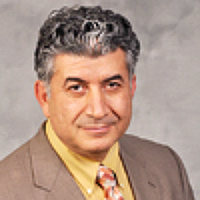Improving cancer diseases classification using a hybrid filter and wrapper feature subset selection
Published on: 11th February, 2020
OCLC Number/Unique Identifier: 8550274050
In the classification of cancer data sets, we note that they contain a number of additional features that influence the classification accuracy. There are many evolutionary algorithms that are used to define the feature and reduce dimensional patterns such as the gray wolf algorithm (GWO) after converting it from a continuous space to a discrete space. In this paper, a method of feature selection was proposed through two consecutive stages in the first stage, the fuzzy mutual information (FMI) technique is used to determine the most important feature selection of diseases dataset through a fuzzy model that was built based on the data size. In the second stage, the binary gray wolf optimization (BGWO) algorithm is used to determine a specific number of features affecting the process of classification, which came from the first stage. The proposed algorithm, FMI_BGWO, describes efficiency and effectiveness by obtaining a higher classification accuracy and a small number of selected genes compared to other competitor algorithms.
Modeling the Risk of Liver Cancer in Adults: A Machine Learning Investigation into the Role of Obesity and Overweight
Published on: 28th December, 2023
Background: Liver cancer is a global health concern, with overweight and obese individuals exhibiting an increased risk of its development. Understanding the interplay between obesity-related factors and liver cancer incidence is crucial for early prediction and intervention.Aim: The aim of this investigation was to construct and validate an extreme gradient boosting (XGBoost) based machine learning model for the purpose of establishing a one-year liver cancer risk prediction system specifically tailored to overweight and obese patients. In addition, this study sought to compare the predictive performance of the XGBoost model with those of a random forest model and a logistic regression model, while also identifying the most influential predictive features for liver cancer incidence.Methods: A comprehensive retrospective analysis was conducted on MIMIC III data comprising 2,354 patients. To predict the risk of liver cancer development, three machine learning models were developed: XGBoost, random forest, and logistic regression. Feature selection was executed using a stepwise regression procedure encompassing both forward selection and backward elimination.Results: The stepwise regression technique unveiled 14 predictive factors for liver cancer incidence. Among the patient cohort, 132 individuals developed liver cancer within a year of follow-up, while 2,222 did not. Notably, most liver cancer cases occurred in male patients (60%). Statistically significant differences were observed between patients with liver cancer and those without, in terms of age, gender, total bilirubin, platelet, albumin, chloride, potassium, sodium, prothrombin time (PT) and alanine aminotransferase (ALT). The XGBoost model exhibited an impressive area under the receiver operating characteristic curve (AUROC) of 99%, Random Forest (RF) of 99%, and Logistic Regression (LR) of 90%. In a multivariate analysis, total bilirubin, creatinine levels, age, gender, ALT, alkaline phosphate (ALP), PT, calcium, and chloride emerged as independent predictors for liver cancer incidence.Conclusion: The XGBoost model demonstrated superior predictive performance when compared to the RF and LR models. If corroborated through prospective studies, the XGBoost model may prove to be a valuable tool for the early prediction of liver cancer risk in overweight or obese individuals. Such predictive capabilities could, in turn, facilitate the implementation of timely preventive interventions against liver cancer.
Feature Processing Methods: Recent Advances and Future Trends
Published on: 23rd March, 2025
This paper shows the developments and directions in feature processing. We begin by revisiting conventional feature processing methods, then focus on deep feature extraction techniques and the application of feature processing. The article also analyzes the current research challenges and outlines future development directions, providing valuable insights in related fields.




